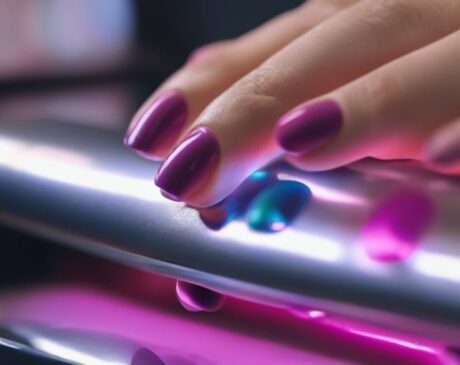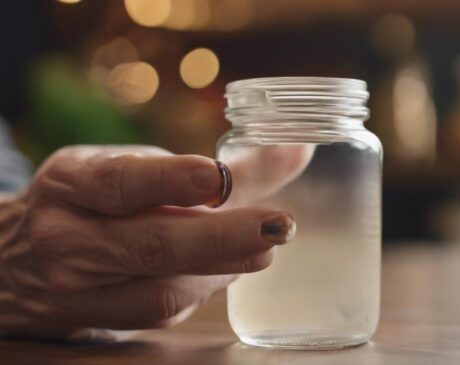What Is a Milk Manicure?
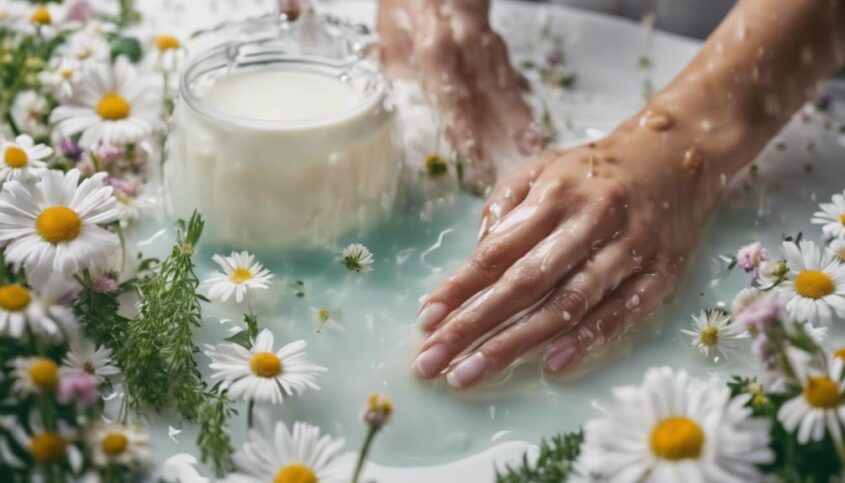
A milk manicure is a beauty treatment that merges ancient skincare wisdom with modern methods. It utilizes the nourishing properties of milk to enhance the health and radiance of nails and skin. Milk contains lactic acid for gentle exfoliation and offers benefits such as hydration, moisture, and skin repair. The process involves a warm milk soak, milk-based scrub, cream massage, and specialized tools like cuticle pushers and nourishing hand cream. If you want to discover more about the origins, benefits, tools, and comparison with traditional manicures, this milk manicure guide provides in-depth insights.
Key Takeaways
- Milk manicures use milk's nourishing properties for healthy skin.
- They involve soaking, exfoliating, massaging, and polishing with milk-based products.
- Milk manicures promote hydration, exfoliation, and soothing effects.
- Ancient skincare wisdom meets modern techniques in milk manicures.
- Benefits include softening skin, nourishing nails, and overall skin health.
Origins of Milk Manicures
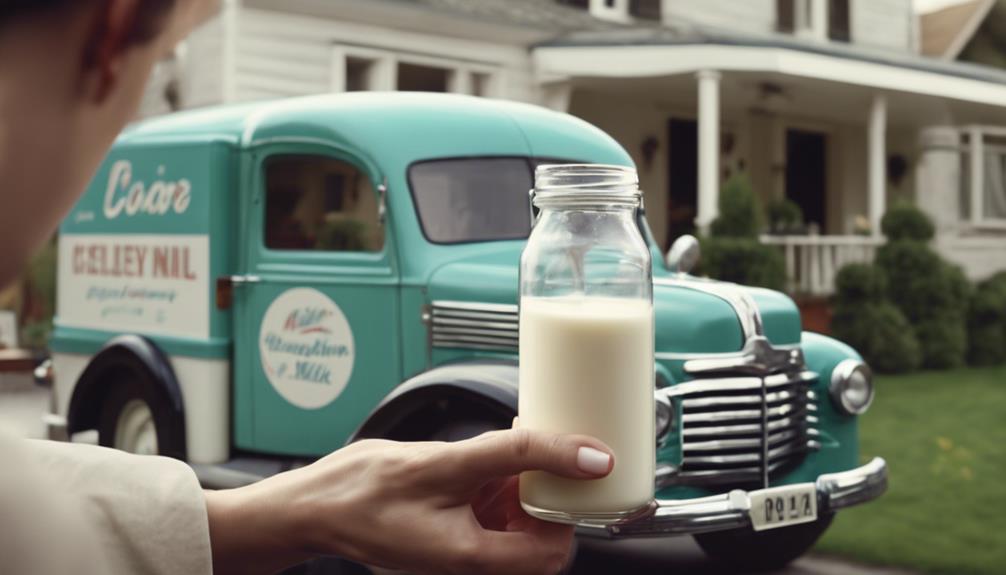
The origins of milk manicures trace back to ancient Egyptian beauty rituals, where milk was revered for its nourishing and moisturizing properties for the skin and nails. Cleopatra, known for her beauty and skincare routines, was said to have indulged in milk baths, attributing her radiant skin to this practice. Milk contains lactic acid, an alpha hydroxy acid known for its exfoliating properties, which can help to soften the skin and strengthen the nails.
Over time, the beauty industry has adapted this ancient practice into modern nail care routines, giving rise to the trend of milk manicures. Milk manicures involve soaking the nails in a mixture of milk and other beneficial ingredients to promote nail health and hydration. This innovative approach combines the ancient wisdom of skincare with contemporary nail care techniques, offering a luxurious and pampering experience for those seeking nourished and beautiful nails.
Benefits of Using Milk
Using milk in your manicure routine offers various benefits for your skin. Milk provides nourishment, helping to keep your skin healthy and glowing. Additionally, milk's natural hydrating properties can give your skin a moisture boost, while its soothing and calming effects can help relax and rejuvenate your hands.
Skin Nourishment With Milk
Rich in nutrients and vitamins, incorporating milk into your skincare routine can provide your skin with essential nourishment and hydration. Milk contains lactic acid, fats, and proteins that offer various benefits for your skin:
- Hydration: The high water content in milk helps keep your skin hydrated and plump.
- Exfoliation: Lactic acid gently exfoliates the skin, removing dead cells and revealing a brighter complexion.
- Anti-inflammatory properties: Milk can soothe irritated skin and reduce redness.
- Vitamins and minerals: Milk is rich in vitamins A, D, E, and essential minerals like calcium, which promote healthy skin function and repair.
Incorporating milk into your skincare regimen can lead to nourished, radiant skin.
Hydration Boost Naturally
In the realm of skincare enhancements, harnessing the natural hydrating properties of milk stands as a proven method for promoting skin nourishment and vitality. Milk contains lactic acid, a gentle exfoliant that aids in removing dead skin cells, allowing for better absorption of moisture. The proteins and fats in milk help to hydrate and soften the skin, contributing to a more supple and radiant complexion. Additionally, milk is rich in vitamins and minerals that support skin health and repair, enhancing its overall appearance. By incorporating milk into your skincare routine, you can naturally boost hydration levels, leading to a more nourished and revitalized skin texture. Embrace the benefits of milk for a naturally hydrated and healthy-looking skin.
Soothing and Calming Properties
With its inherent soothing and calming properties, milk serves as a natural powerhouse in promoting skin tranquility and relaxation. When used in a milk manicure, these benefits are further enhanced, providing a luxurious spa-like experience. Here are four ways milk contributes to soothing and calming properties in a manicure:
- Reduced Inflammation: Milk's anti-inflammatory properties help soothe irritated skin and reduce redness.
- Moisture Retention: Milk helps the skin retain moisture, promoting soft and supple hands.
- Exfoliation: The lactic acid in milk gently exfoliates dead skin cells, revealing smoother skin.
- Aromatherapy: The subtle scent of milk adds a calming element to the manicure experience, enhancing relaxation.
Milk Manicure Process
To achieve a successful milk manicure, understanding the benefits of milk and following the necessary steps for the manicure are essential. Incorporating milk into your nail care routine can provide nourishment and hydration, while the specific process of the milk manicure involves a series of steps that aim to improve the health and appearance of your nails. By grasping the advantages of using milk and mastering the manicure procedure, you can enjoy healthier, more beautiful nails.
Benefits of Milk
Rich in lactic acid and vitamins, milk offers a nourishing and hydrating treatment for the nails during a milk manicure. Here are some benefits of using milk in a manicure:
- Hydration: Milk helps to moisturize and soften the nails and cuticles, leaving them feeling smooth and nourished.
- Strength: The proteins in milk can help strengthen the nails, reducing the risk of breakage and promoting healthy nail growth.
- Whitening: Milk can help to whiten the nails, removing any stains or discoloration for a clean and polished look.
- Nourishment: The vitamins and minerals in milk provide essential nutrients to the nails, promoting overall nail health and vitality.
Steps for Manicure
A key aspect of the milk manicure process involves preparing the nails and cuticles for the treatment. This innovative approach begins by gently filing the nails to the desired shape and buffing the surface to create a smooth canvas. Next, a warm milk soak is used to soften the cuticles, allowing for easy removal and promoting overall nail health. Following this, a milk-based scrub is applied to exfoliate the hands and nails, leaving them feeling soft and rejuvenated. The manicurist then massages a nutrient-rich milk cream into the skin, providing deep hydration and nourishment. Finally, a milk-infused polish is carefully applied, giving the nails a lustrous finish. This meticulous process results in not just beautiful nails but also nourished and healthy hands.
Milk Manicure Tools
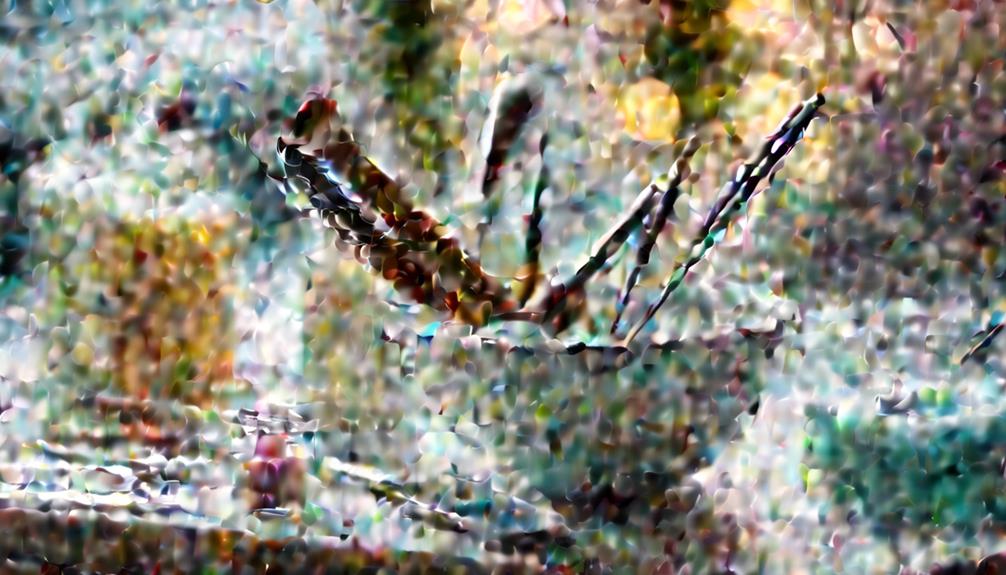
Among the essential tools required for a milk manicure are specialized cuticle pushers, soft bristle brushes, and a gentle exfoliating scrub. These tools are crucial for achieving a flawless milk manicure that leaves your nails looking nourished and healthy. Here is a list of key tools for a milk manicure:
- Specialized Cuticle Pushers: These tools are designed to gently push back the cuticles without causing any damage to the nail bed.
- Soft Bristle Brushes: Soft bristle brushes help in gently exfoliating the nails and surrounding skin, removing any dead skin cells and impurities.
- Gentle Exfoliating Scrub: An exfoliating scrub with mild ingredients like milk and honey helps in sloughing off dead skin cells and leaving the nails smooth and rejuvenated.
- Nourishing Hand Cream: After the milk manicure, a nourishing hand cream enriched with vitamins and natural oils can be applied to keep the hands and nails hydrated and soft.
These tools, when used correctly, can elevate your milk manicure experience to a whole new level of luxury and pampering.
DIY Milk Manicure at Home
To achieve a professional milk manicure at home, follow these simple steps for nourished and healthy nails. Begin by pouring warm milk into a small bowl, enough to soak your fingertips. Submerge your fingertips in the milk for about 5-10 minutes to allow the lactic acid and proteins in the milk to moisturize and strengthen your nails. After soaking, gently pat your hands dry with a soft towel. Next, exfoliate your hands with a mixture of milk and sugar to slough off dead skin cells and reveal smoother skin. Rinse off the exfoliant with warm water and pat your hands dry again.
Once your hands are prepped, proceed by shaping your nails, pushing back cuticles, and applying a clear base coat. To add a milky hue, mix a small amount of milk with white nail polish and apply it evenly to each nail. Finish with a top coat for added shine and protection. Voila! Enjoy your DIY milk manicure for nourished and glossy nails right from the comfort of your home.
Milk Manicure Vs. Traditional Manicure
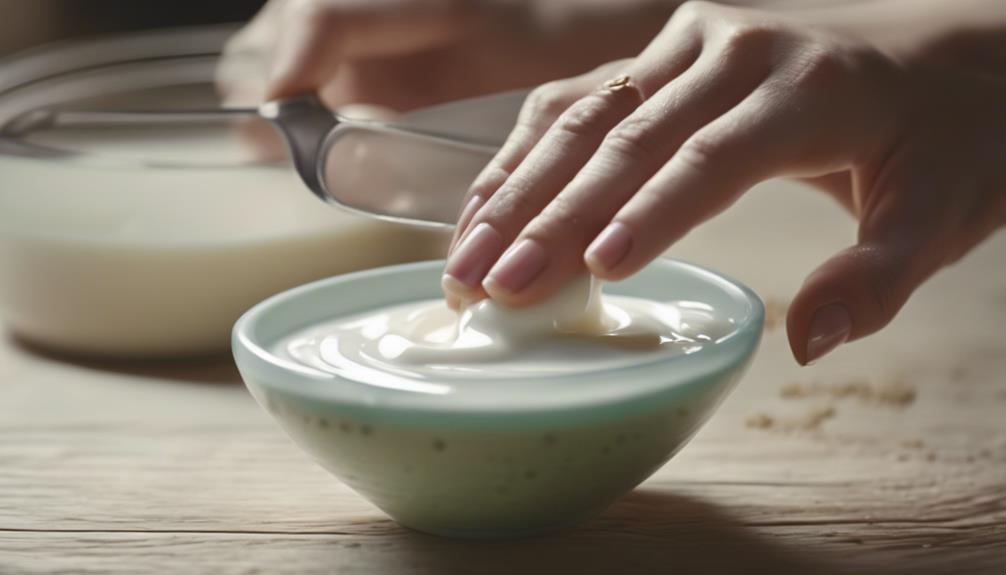
When comparing a milk manicure to a traditional manicure, the key differences lie in the nourishing properties and unique benefits that milk brings to the nail care routine. Milk manicures offer a more holistic approach to nail care, providing nutrients that promote healthier nails and cuticles. Here is a comparison between a milk manicure and a traditional manicure:
- Nourishment: Milk manicures deeply hydrate and nourish the nails, thanks to the proteins and vitamins present in milk, which help strengthen the nails.
- Gentleness: Unlike traditional manicures that may involve harsh chemicals, milk manicures are gentle on the nails and skin, making them suitable for those with sensitive nails.
- Whitening Effect: Milk can help whiten and brighten the nails, giving them a natural shine, whereas traditional manicures may not offer this benefit.
- Overall Nail Health: Milk manicures focus on improving the overall health of the nails, promoting growth and preventing brittleness, which may not be the primary focus of traditional manicures.
Maintenance Tips for Milk Manicures
Proper maintenance is essential for prolonging the benefits of a milk manicure and ensuring the longevity of your nail health. To maintain the exquisite look and feel of your milk manicure, consider the following tips:
- Moisturize Regularly: Keep your cuticles and nails hydrated by applying a nourishing cuticle oil or cream daily. This will help prevent dryness and maintain the moisture balance essential for healthy nails.
- Wear Gloves: When performing household chores or any activity that involves prolonged exposure to water or harsh chemicals, protect your milk manicure by wearing gloves. This simple step can prevent chipping, peeling, and discoloration of your nails.
- Avoid Harsh Products: Be mindful of the products you use on your hands and nails. Opt for gentle, non-acetone nail polish removers and mild soaps to preserve the integrity of your milk manicure.
- Schedule Regular Touch-Ups: To keep your milk manicure looking fresh and flawless, consider scheduling regular touch-up appointments with your nail technician. This will help maintain the vibrancy and longevity of your manicure.
Frequently Asked Questions
Can Milk Manicures Be Done on Natural Nails or Do They Only Work on Acrylic or Gel Nails?
Milk manicures can enhance natural nails, as they offer nourishing benefits due to the presence of proteins and vitamins. This innovative technique is versatile and can be applied on natural, acrylic, or gel nails, providing hydration and strength.
Are There Any Specific Types of Milk That Work Best for Milk Manicures, Such as Whole Milk, Almond Milk, or Coconut Milk?
When considering milk for manicures, the ideal types often depend on individual preferences and desired outcomes. Options such as whole milk, almond milk, or coconut milk can offer varying benefits like hydration or nourishment, allowing for personalized nail care experiences.
Can Milk Manicures Help Strengthen Weak or Brittle Nails?
Milk manicures, a rising trend, are believed to potentially strengthen weak and brittle nails due to the nourishing properties of milk. Rich in protein and calcium, milk may aid in improving nail health.
Are There Any Potential Side Effects or Risks Associated With Using Milk for Nail Care?
While milk manicures can offer benefits like strengthening nails, it's important to note potential risks. Possible side effects may include allergic reactions for those with dairy sensitivities. Consultation with a dermatologist is advisable before trying this treatment.
Can Milk Manicures Help With Nail Discoloration or Yellowing?
Milk manicures, known for their potential to address nail discoloration or yellowing, are gaining attention for their innovative approach. This technique offers a natural remedy that may help restore the nails' appearance, providing a fresh and rejuvenated look.

